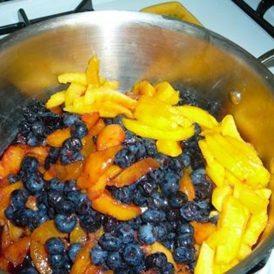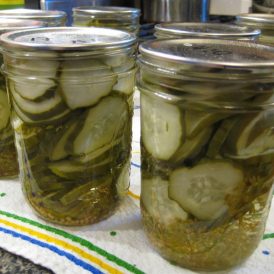Photo by William Cullina
The accepted wisdom on roses is forbidding. The queen of flowers requires royal treatment: the richest soil, drip irrigation, a bed of its own, and precise pruning at a 45-degree angle. If the rituals aren’t done just right, the luxurious shrub with its delicate flowers turns into a single spindly cane.
North America’s native wild roses, however, require no such pedestal. You can burn them, mow them, step on them, and eat them. They’re equally at home growing by train tracks, on the edges of swamps, or in frozen tundra as in the most coddled garden. They’re so tough that the United States Department of Soil Conservation once tested some species in highway medians, finding that they could stop an out-of-control car. And despite their bearishness, some of them possess the qualities that have made us obsess over the rose for millennia — edible hips with eight times the concentration of vitamin C found in oranges, the ability to flower multiple times a year, and a rich, old-rose scent so complex and tuned to our senses that it can’t be effectively recreated in a laboratory. Native roses are also resistant to another North American native, rose rosette disease, which is incurable after it infects a rose plant.
Landscape Use
Influential English rosarian Graham Stuart Thomas claimed that of all the roses in his garden, visitors gave the most attention to Rosa stellata, a Southwest native with leaves resembling those of a gooseberry, a rich almond fragrance, and occasional repeat blooming. Thomas’ high estimation of many of North America’s wild roses wasn’t isolated. But despite their incomparable charms, they remain in limbo, rarely used deliberately in the landscape.
Photo by Getty Images/Etka45
Effective garden use of native rose species requires reframing them. Instead of thinking of them as options in a palette of roses, reimagine them as alternatives to popular garden plants, such as potentilla, beautyberry, privet, holly, anemone, and forsythia. Species such as ‘Virginia Rose’ (R. virginiana), with its dense, mounding growth and shiny leaves, make superb flowering hedges, while ‘Cluster Rose’ (R. pisocarpa) produces dense displays of fall and winter fruit that could substitute for or pair with beautyberry. As a plus, ‘Cluster Rose’ may repeat bloom. A recent selection of ‘Swamp Rose’ (R. palustris) that’s reliably repeat-flowering deserves to be considered alongside the landscaping standbys ‘Knock Out’ and ‘Rugosa Rose’ (R. rugosa).
Because North American native rose species grow in virtually every habit imaginable, including dwarfs, climbers, ground covers, and shrubs, they offer something for almost every gardener. Traditional growers combined beauty and function, using ‘Prairie Rose’ (R. setigera) in living fences to contain livestock and ‘Pasture Rose’ (R. carolina) for deer-resistant garden borders. The virtues that make native roses so adept in tough situations transfer well to the smallest planting areas — their extreme tolerance of moisture, drought, heat, and cold makes them perfect choices for container gardening. You could neglect a wild rose in a small container all summer, and it would survive and flower. Other roses in the same situation would dry out and die. Keeping wild roses in pots also controls their tendency to spread like mint, and lets you move them in and out of focal points as you please. R. carolina plena, a repeat-blooming, fragrant, cabbage-flowered form of ‘Pasture Rose,’ would be perfect for a busy person looking for an easy-care patio rose.
Photo by Malcolm Manners
Wild roses are also suited to beach plantings, pollinator gardens, meadows, grottos, stream banks, lake edges, slopes (where their suckering habit offers erosion control), boreal forests, mountains, deserts, and wetland mitigation areas. They’re lovely in authentic old gardens; they were once prized and widely planted by everyone from farmers to aristocrats, including members of the 19th century Boston elite and the old Virginia aristocracy. President Thomas Jefferson himself grew them and jotted down their bloom time in his garden book. He was such an advocate of native North American roses that he personally took seed orders from his French friends.
Get Growing
Many North American native roses can be readily obtained from seed suppliers. Growing from seed can be a good way to promote genetic diversity.
However, plants grown from seed can take up to five years to flower and may not have the desirable traits of horticultural selections, such as fewer thorns, repeat-blooming, rich scent, and dense foliage. If those traits are important to you, find a nursery that sells vegetatively propagated plants, propagate wild plants yourself, or trade with other collectors. Remember, if you wish to collect wild plants, you’ll need permission from the landowner, and obey the laws surrounding collection in parks and protected areas.
Photo by Malcolm Manners
In most cases, propagating wild roses is as easy as dividing other spreading perennials, such as bee balm or daylilies. Simply separate a sucker with roots from the main clump. Pot the pieces up and place them under a tree, on a porch, or on the shady side of a house for a month or two. While you can propagate wild roses by division anytime, transplants taken in early fall will require the least attention. In a good season with weekly rainfall, you may not even need to water a new plant after the initial potting.
Occasionally, dividing roses isn’t an option. In these cases, you could try layering or taking cuttings. To layer a rose, bend an arching stem over, twist or otherwise injure a small area of the stem, and bury the injured portion. When the stem roots, sever it from the mother plant and pot it.
Photo by Getty Images/skymoon13
Taking cuttings is the best method for producing a large number of plants, but without a professional greenhouse, success is haphazard. Cut 6-inch-long, pencil-thick pieces from the tip of a recently flowered stem. As quickly as possible, dip them in rooting hormone and pot them in a well-drained medium. Cover with a clear container, such as a plastic bag or milk jug, to keep moisture levels up.
The last option for home gardeners is to bud or graft onto rootstock. This is standard practice in the nursery trade for commercial roses, but natives are almost never available on rootstock. Wild roses must be budded or grafted onto rootstock to be suitable for in-ground planting in a small garden. As long as the bud union is kept well above the soil, and the stems are kept from rooting at the tips, a budded or grafted wild rose won’t spread like its own-root counterparts. Budding and grafting are specialized techniques best taught through demonstration. Contact your local horticulture extension agent to inquire about classes, or view step-by-step videos online.
Photo by Getty Images/AndreaPad77
While native roses don’t require any care, they will respond to it. Irrigation, full sun, regular additions of manure or compost, and loamy soil may encourage them to grow larger, produce more fragrant flowers, and, for those that can, repeat bloom better. If you plan to harvest flowers or fruit, avoid spraying toxic chemicals or using systemic pesticides or fungicides. The fruit is best harvested in fall or winter, after it’s been softened by a couple of hard frosts.
Ben Whitacre is a hobbyist gardener with a particular interest in figs and roses. He’s worked with roses at Arnold Arboretum, Mount Auburn Cemetery, and Monticello.









